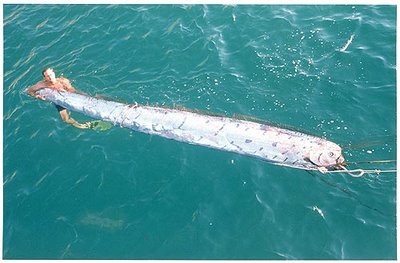Steve and Reid could each provide good commentary here, but with their indulgence, I'll take first dibs.
Reuters carried this story earlier in the week, reporting the release of a study finding no evidence for the notion that hunting cougars reduces the incidence of cougar attacks on people or livestock. Given only that information, I might have been curious but not skeptical about the news... Assuming some cite public safety in defense of cougar hunting, I would expect some others to refute the claim: Discourse happens, as it should!
Popular notions are notoriously convenient to hold and debunking them is part of the work of science. I've debunked plenty of my own erroneous notions by simply watching and taking notes, two common sense pillars of the scientific method.
But fair inquiry requires independence from politics and pre-supposition (yet more notions!), a standard admittedly difficult to meet by mere humans. So scientists counter their innate prejudices with a complex code of ethics, calling for rigorous training, academic tenure, full disclosure, self-policing, peer review, public comment and replications of finding. Thus are private agendas tied down and forcibly contained.
This self-conscious scientific rigor is why we tend to believe reports filed by the Centers for Disease Control and Prevention and to question press releases from the White House. It's why the energy sector has to
buy its own global warming critics.
But what does this have to do with cougars? Well, crouching in the Reuters story I see signs of rogue politics, ready to spring.
First Off:
The study was conducted by a biologist on staff with
The Mountain Lion Foundation of California, a private organization that by its
own list of accomplishments brought about (via ballot initiative) the standing ban on hunting cougars in that state.
The study's findings are characterized by organization President Lynn Sadler in this way:
"Sport hunting is nothing more than the random shooting of mountain lions for fun. It does not reduce attacks on people or livestock, as far as we can tell...What we would like to see is that states manage them according to science, and not just some, you know, idea that you can somehow randomly shoot them for fun and cause anybody or anything to be any safer."
These seem to me statements
heavy with pre-supposition. And Sadler's repeating the phrase "random shooting for fun," in reference to hunting, sounds like something political consultants would call "staying on message."
For clues to the messengers here, it might be helpful to look at the Foundation's listed "
partners," which include The Humane Society of the United States, Defenders of Wildlife and the Animal Protection Institute. Note also the fact that the MLF and these partner organizations share some
board members.
But there is an obvious difference between the work of science and the use or interpretation of scientific findings. It might be that this study, conducted by Christopher Papouchis (a former wildlife biologist for the USGS) maintains the high standards and rigor of good science.
But it's kind of hard to tell.
Have a look.
You'll see quickly that the available report doesn't follow the standard format of a scientific paper---not that this venue requires it, but part of the reason for that standard format is to give the reader a clear picture of methodology and to view enough of the raw data to evaluate the study's conclusions. In fact, it should be possible to replicate its results given the information provided.
This is simply not the case with the MLF study, which is evidently the final report and the same one cited by the Reuters news story.
I'll leave it to my much better-qualified blog partners (and please, to any readers who care to comment) to help clarify the methodology of this study as we're presented with it. I would be especially curious to know:
- Why sport hunting and government shooting (on depredation) were not parsed out, presented separately in the figures and factored in?
- Why attacks on humans were measured in millions per incident instead of the standard #-per 100,000 people-per year?
- Why the extent of suitable habitat was used as a variable instead of cougar density within that habitat?
- What the rate of cougar attacks was before the 1972 California ban versus the years afterwards, and why that wasn't an obvious question to ask regarding this issue?
- Would a version of this study including its raw data ever be submitted to Journal of Wildlife Management or other peer reviewed field publication?
This last question I asked Mr. Papouchis directly, in response to his kind initial offer to answer any question I had.
If I receive a reply I will post it here.
UPDATE (16 Aug): I did receive a very cordial and interesting reply from Mr. Papouchis. He read this post and gave answers to my questions. I've asked him for permission to publish his response here but may not hear back from him until his return from a trip. If he allows it, I'll post it in a new blog.





























